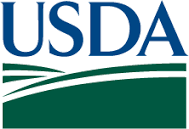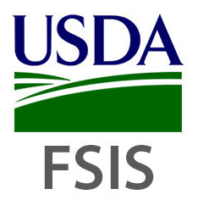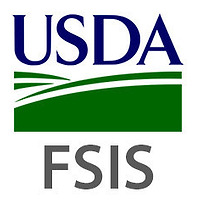The U.S. Department of Agriculture’s (USDA’s) Food Safety and Inspection Service (FSIS) has refreshed its list of recommendations to avoid foodborne illness for those impacted by recent flooding, specifically in the state of Louisiana.
Food Safety After a Flood:
- Do not eat any food that may have come into contact with flood water – this would include raw fruits and vegetables, cartons of milk or eggs.
- Discard any food that is not in a waterproof container if there is any chance that it has come into contact with flood water. Food containers that are not waterproof include those packaged in plastic wrap or cardboard, or those with screw?caps, snap lids, pull tops, and crimped caps. Flood waters can enter into any of these containers and contaminate the food inside. Also, discard cardboard juice/milk/baby formula boxes and home canned foods if they have come in contact with flood water, because they cannot be effectively cleaned and sanitized.
- Inspect canned foods and discard any food in damaged cans. Can damage is shown by swelling, leakage, punctures, holes, fractures, extensive deep rusting, or crushing/denting severe enough to prevent normal stacking or opening with a manual, wheel?type can opener.
Steps to follow in advance of losing power:
- Keep appliance thermometers in both the refrigerator and the freezer to ensure temperatures remain food safe during a power outage. Safe temperatures are 40°F or lower in the refrigerator, 0°F or lower in the freezer.
- Freeze water in one-quart plastic storage bags or small containers prior to a storm. These containers are small enough to fit around the food in the refrigerator and freezer to help keep food cold. Remember, water expands when it freezes so don’t overfill the containers.
- Freeze refrigerated items, such as leftovers, milk and fresh meat and poultry that you may not need immediately—this helps keep them at a safe temperature longer.
- Know where you can get dry ice or block ice.
- Have coolers on hand to keep refrigerator food cold if the power will be out for more than four hours.
- Group foods together in the freezer—this ‘igloo’ effect helps the food stay cold longer.
- Keep a few days’ worth of ready-to-eat foods that do not require cooking or cooling.
- Steps to follow if the power goes out:
- Keep the refrigerator and freezer doors closed as much as possible. A refrigerator will keep food cold for about 4 hours if the door is kept closed. A full freezer will hold its temperature for about 48 hours (24 hours if half-full).
- Place meat and poultry to one side of the freezer or on a tray to prevent cross contamination of thawing juices.
- Use dry or block ice to keep the refrigerator as cold as possible during an extended power outage. Fifty pounds of dry ice should keep a fully-stocked 18-cubic-feet freezer cold for two days.
Steps to follow after a weather emergency:
- Check the temperature inside of your refrigerator and freezer. Discard any perishable food (such as meat, poultry, seafood, eggs or leftovers) that has been above 40°F for two hours or more.
- Check each item separately. Throw out any food that has an unusual odor, color or texture or feels warm to the touch.
- Check frozen food for ice crystals. The food in your freezer that partially or completely thawed may be safely refrozen if it still contains ice crystals or is 40°F or below.
- Never taste a food to decide if it’s safe.
- When in doubt, throw it out.
In addition to these tips, FSIS also suggests following the U.S. Department of Health and Human Services’ list of what foods should be discarded if a refrigerator has been held at a temperature above 40 °F for more than two hours. That list can be found at FoodSafety.gov.
FSIS will continue to share updates via the agency’s social media channels.
For consumers needing more hands-on assistance, FSIS encourages the public to direct food safety concerns to “Ask Karen,” the FSIS virtual representative available 24 hours a day at www.AskKaren.gov or m.AskKaren.gov on a smartphone. The mobile Ask Karen can also be downloaded from the iTunes and Google Play app stores. Consumers can e-mail, chat with a live representative or call the USDA Meat and Poultry Hotline directly from the app. To use these features from Mobile Ask Karen, simply choose “Contact Us” from the menu. The live chat option and the toll-free USDA Meat and Poultry Hotline, 1-888-MPHotline (1-888-674-6854), are available on weekdays from 10 a.m. to 4 p.m. ET in English and Spanish.
Sign up for Food Safety Magazine’s bi-weekly emails!




